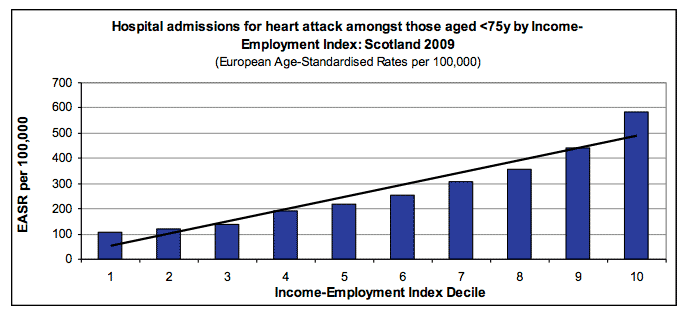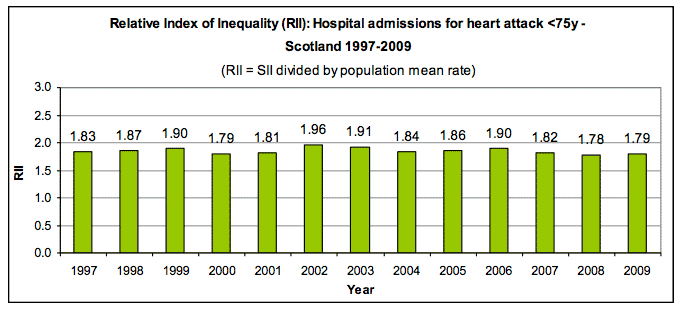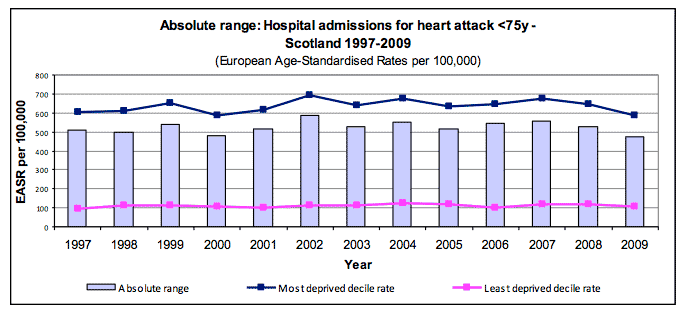Long-Term Monitoring of Health Inequalities
An annual report which summarises the long-term differences in health trends between the least and most deprived areas of Scotland.
This document is part of a collection
Alcohol - first ever hospital admission aged under 75 years 4
Summary
- Inequalities have fluctuated, with no clear long term trend in absolute and relative terms although there are signs of a slight decrease in the last few years.
Between 1997 and 2007 rates of new hospital admissions for alcohol-related conditions among those aged under 75 years grew by 18%. Since 2007 rates have fallen back almost to 1997 levels. In 2009 there were around 13,700 new cases. These types of admissions are more common in deprived areas - 585 per 100,000 population compared to 109 per 100,000 population in areas of low deprivation, an absolute range of 475. Both absolute and relative inequalities have remained stable, albeit with some fluctuation from one year to the next. There has been a decrease in absolute inequality since 2007, mainly caused by a decrease in the admission rate in the most deprived decile from 676 per 100,000 population (in 2007) to 585 per 100,000 population (in 2009).
Inequalities gradient in the most recent year available

Relative Index of Inequality ( RII) over time

Absolute range over time

Scale / context
| Number of admissions | Target pop | EASR | |
|---|---|---|---|
| 1997 | 12,310 | 4,740,269 | 254.1 |
| 1998 | 12,900 | 4,729,975 | 265.7 |
| 1999 | 12,871 | 4,721,298 | 265.8 |
| 2000 | 12,695 | 4,708,667 | 262.6 |
| 2001 | 13,474 | 4,703,661 | 276.9 |
| 2002 | 13,656 | 4,690,508 | 280.3 |
| 2003 | 13,249 | 4,690,603 | 269.6 |
| 2004 | 14,482 | 4,706,922 | 291.6 |
| 2005 | 13,911 | 4,718,403 | 278.8 |
| 2006 | 14,353 | 4,734,676 | 286.7 |
| 2007 1 | 15,110 | 4,755,963 | 300.9 |
| 2008 1 | 14,972 | 4,775,321 | 296.3 |
| 2009 | 13,696 | 4,795,479 | 269.5 |
1. The 2007 and 2008 data has been revised since the publication of the October 2010 report.
There is a problem
Thanks for your feedback